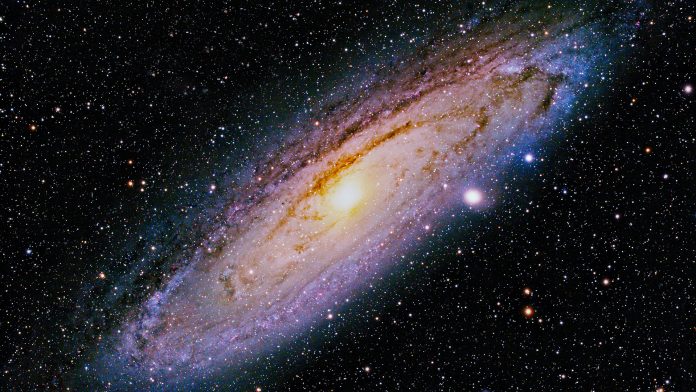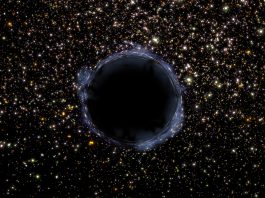A team of astronomers using the Atacama Large Millimeter/submillimeter Array (ALMA) discovered quasi-periodic flickers in millimetre-waves from the centre of the Milky Way, Sagittarius A*.
The research team interpreted these quasi-periodic flickers to be caused by the rotation of radio spots circling the supermassive black hole with an orbit radius smaller than that of Mercury.
Infrared and x-ray observation
Astronomers believe that there is a supermassive black hole with a mass of four million suns located at the centre of Sagittarius A*. Researchers have observed the quasi-periodic flickers of Sagittarius A* not only in millimetre wavelength, but also in infrared light and x-ray. However, the variations detected with ALMA are much smaller than the ones previously detected.
The black hole does not produce any kind of emission. The source of the quasi-periodic flickers is believed to be the scorching gaseous disk around the black hole. The gas around the black hole does not go straight to the gravitational well, but it rotates around the black hole to form an accretion disk.
“It has been known that Sagittarius A* sometimes flares up in millimetre wavelength. This time, using ALMA, we obtained high-quality data of radio-wave intensity variation of Sagittarius A* for 10 days, 70 minutes per day. Then we found two trends: quasi-periodic variations with a typical time scale of 30 minutes and hour-long slow variations,” says Yuhei Iwata, the lead author of the paper published in the Astrophysical Journal Letters and a graduate student at Keio University, Japan.
“This emission could be related with some exotic phenomena occurring at the very vicinity of the supermassive black hole,” says Tomoharu Oka, a professor at Keio University.
Variation in measurements
The team focused on the short timescale variations of the quasi-periodic flickers and found that the variation period of 30 minutes is comparable to the orbital period of the innermost edge of the accretion disk with the radius of 0.2 astronomical units. For comparison, Mercury, our solar system’s innermost planet, circles around the Sun at 0.4 astronomical units. Considering the colossal mass at the centre of the black hole, its gravity effect is also extreme in the accretion disk.
The team suggest that hot spots are formed in the disk and circle around the black hole, emitting strong millimetre waves. The rotation speed of the inner edge of the accretion disk is quite large, so this extraordinary effect arises. The astronomers believe that this is the origin of the short-term variation of the millimetre emission from Sagittarius A*.
“In general, the faster the movement is, the more difficult it is to take a photo of the object,” says Oka. “Instead, the variation of the emission itself provides compelling insight for the gas motion. We may witness the very moment of gas absorption by the black hole with a long-term monitoring campaign with ALMA.” The researchers aim to draw out independent information to understand the mystifying environment around the supermassive black hole.









